10 Beautiful Photos of Seeds (And Fun Facts for Each)
There’s something totally captivating about the simple beauty of a seed.
10 Beautiful Photos of Seeds (And Fun Facts for Each)
There’s something totally captivating about the simple beauty of a seed.
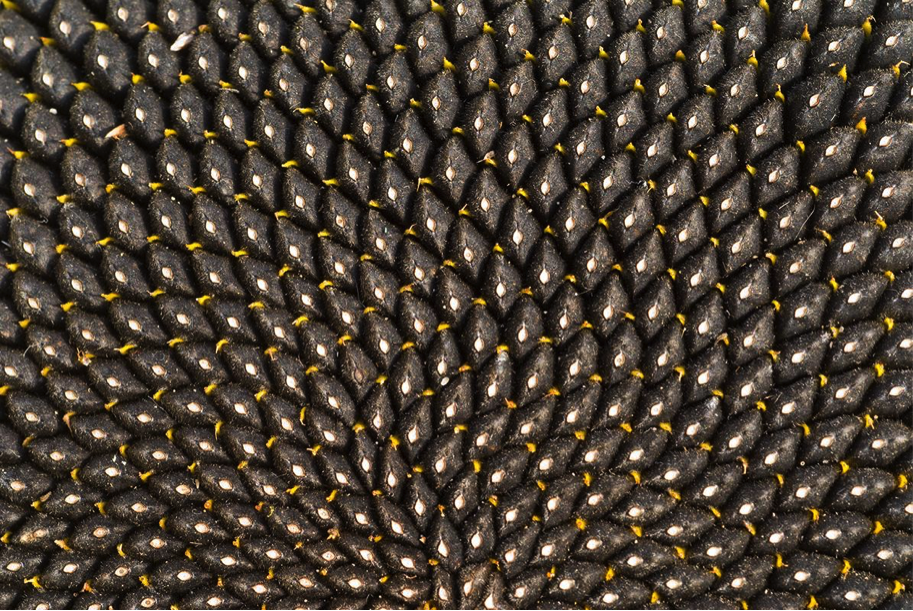
POPPY SEED
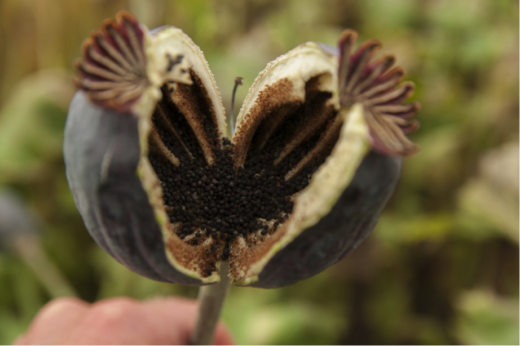
Most bakers, and those who enjoy baked goods, are probably familiar with poppy seeds. Pictured here is a poppy seed pod, which is what’s left on the stem once the flower blooms and the petals fall off. Each seed pod can hold more than 200 seeds, which, in nature, eventually shake out through those slits. (Note: There are many poppy varieties, many of which are perfectly ok to grow for decoration or seeds.)
SEEDBOX PLANT
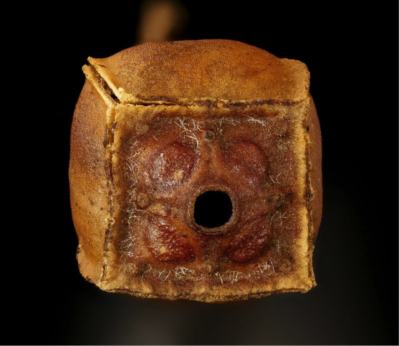
This is the seed pod of the wetland plant known formally as Ludwigia alternifolia, but more commonly referred to as the bushy seedbox, or rattlebox. It’s easy to see why. Similar to a poppy’s pod, the seedbox stores its seeds in this tough container, where they’ll eventually fall out through this hole and reseed nearby. But there may be more lurking within: it’s common for weevils to lay their eggs in these tiny pods, only to find themselves stuck when they’re too big to fit through the single hole (click here to see what that looks like – at your own risk).
POMEGRANATE
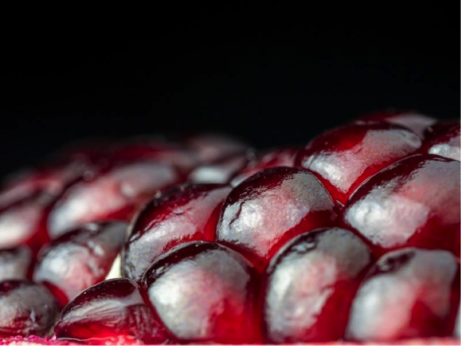
Here’s another fun one! You probably recognize this as a pomegranate. And you probably think of these as pomegranate seeds. But that’s not the whole story: yes, there are seeds in this picture, but the outer layer is actually the sarcotesta: a fleshy, juicy, edible covering surrounding each seed. When you eat a pomegranate, you’re eating both the seed and the sarcotesta. What does the sarcotesta do? Its bright color lures animals into eating the seeds and pooping them out somewhere else to grow. Luckily, we’re good with that: pomegranate seeds are delicious.
HONESTY PLANT
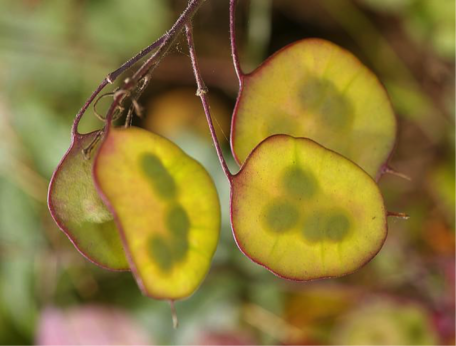
Honesty plants are popular for their pretty, nice-smelling flowers. But it’s their seed pods, which appear after the plant blooms, that really demand attention. Pictured above, these paper-thin pods begin as a raw, spring green and develop a rich, purple tint as they mature. Eventually, the walls of the pod fall away, letting the seeds spread out to begin their new life.
NATIVE FRANGIPANI
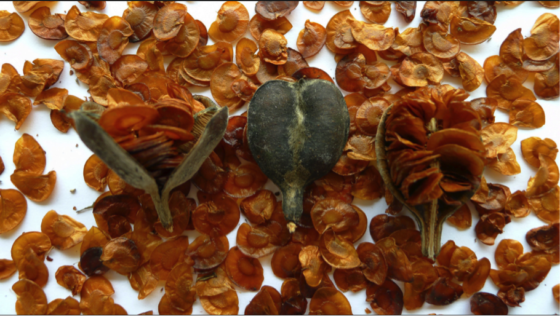
These may look like dried apricot slices, but we’re actually looking at the seeds and seed pods of the native frangipani, one of the most common trees in Australia. These tropical plants originated in the rainforest but are now a landscaping staple Down Under. Note: the native frangipani is not at all related to any of the many plants referred to as frangipanis, which are an entirely different genius. These papery seed pods can grow as large as two inches long, and the plant is actually very easy to propagate from seed.
LOVE PEA

One of the prettiest seeds in the world, this is the Abrus precatorius, which goes by a variety of different names: prayer bead, coral bead, love pea, and many more. Native to India, the plant is prized specifically for these brightly colored seeds, which are sometimes used inside percussion instruments. But beautiful as they may be, they’re highly toxic – don’t eat them.
SUNFLOWER
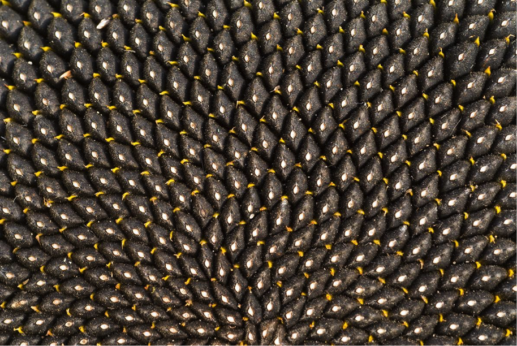
Most people know that the sunflower, which is native to North America, can grow very tall – up to ten feet sometimes (though there are smaller varieties for more modest spaces). What is less known, however, is that each sunflower plant is actually made up of hundreds of tiny flowers: disk flowers, which form the head; and ray flowers, what we commonly petals, which are there to attract pollinators. The sunflower head will eventually turn to seed, and the dried seeds can be harvested, so long as the birds don’t get to them first. Another fun fact? The arrangement of the sunflower seeds follow the mathematical Fibonacci sequence.
MILKWEED
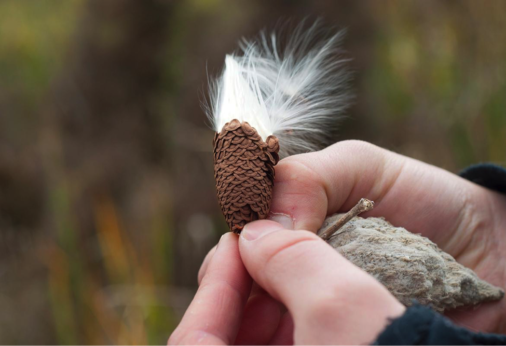
Milkweed is one of the strangest and most important plants in North America (Monarch butterflies can’t survive without them). It boasts big, squishy pods (pictured here) that contain dozens of seeds, each one attached to silky filaments, sort of like a dandelion seed. Late in the year, the pods split open, freeing all of those seeds to be borne away in the wind. Those filaments, by the way, are pretty useful: they’re coated in a waxy substance that makes them outstanding insulators – some manufactures have started using using them as a replacement for down in winter jackets.
FENNEL
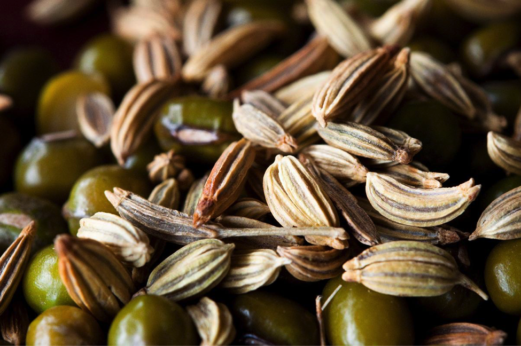
Fennel, a member of the carrot family, is one of the most versatile edible plants in the world: you can eat the bulb, stem, leaves, flowers, pollen, and seeds. In parts of India, fennel seed is used as a breath freshener.
LOTUS POD
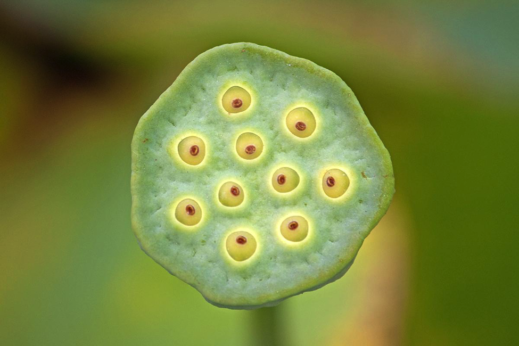
Last but not least, we have the lotus. These aquatic plants are native to Asia and known for their beautiful, large flowers that sit above the water’s surface. When the plant’s petals fall, this seed pod is revealed. Inside each of those holes is a round, hard seed, about the size of a chickpea, which falls out once the pod eventually dries up. Lotus seeds are edible, as is the rest of the lotus plant (though the leaves and petals are usually used as a decorative flourish). Dried lotus seed pods are common in floral arrangements – their dark brown color and remaining seed cups provide a whimsical, woodsy look.
Follow us
This work is licensed under a Creative Commons Attribution-NoDerivatives 4.0 International License.
Want to republish a Modern Farmer story?
We are happy for Modern Farmer stories to be shared, and encourage you to republish our articles for your audience. When doing so, we ask that you follow these guidelines:
Please credit us and our writers
For the author byline, please use “Author Name, Modern Farmer.” At the top of our stories, if on the web, please include this text and link: “This story was originally published by Modern Farmer.”
Please make sure to include a link back to either our home page or the article URL.
At the bottom of the story, please include the following text:
“Modern Farmer is a nonprofit initiative dedicated to raising awareness and catalyzing action at the intersection of food, agriculture, and society. Read more at <link>Modern Farmer</link>.”
Use our widget
We’d like to be able to track our stories, so we ask that if you republish our content, you do so using our widget (located on the left hand side of the article). The HTML code has a built-in tracker that tells us the data and domain where the story was published, as well as view counts.
Check the image requirements
It’s your responsibility to confirm you're licensed to republish images in our articles. Some images, such as those from commercial providers, don't allow their images to be republished without permission or payment. Copyright terms are generally listed in the image caption and attribution. You are welcome to omit our images or substitute with your own. Charts and interactive graphics follow the same rules.
Don’t change too much. Or, ask us first.
Articles must be republished in their entirety. It’s okay to change references to time (“today” to “yesterday”) or location (“Iowa City, IA” to “here”). But please keep everything else the same.
If you feel strongly that a more material edit needs to be made, get in touch with us at [email protected]. We’re happy to discuss it with the original author, but we must have prior approval for changes before publication.
Special cases
Extracts. You may run the first few lines or paragraphs of the article and then say: “Read the full article at Modern Farmer” with a link back to the original article.
Quotes. You may quote authors provided you include a link back to the article URL.
Translations. These require writer approval. To inquire about translation of a Modern Farmer article, contact us at [email protected]
Signed consent / copyright release forms. These are not required, provided you are following these guidelines.
Print. Articles can be republished in print under these same rules, with the exception that you do not need to include the links.
Tag us
When sharing the story on social media, please tag us using the following: - Twitter (@ModFarm) - Facebook (@ModernFarmerMedia) - Instagram (@modfarm)
Use our content respectfully
Modern Farmer is a nonprofit and as such we share our content for free and in good faith in order to reach new audiences. Respectfully,
No selling ads against our stories. It’s okay to put our stories on pages with ads.
Don’t republish our material wholesale, or automatically; you need to select stories to be republished individually.
You have no rights to sell, license, syndicate, or otherwise represent yourself as the authorized owner of our material to any third parties. This means that you cannot actively publish or submit our work for syndication to third party platforms or apps like Apple News or Google News. We understand that publishers cannot fully control when certain third parties automatically summarize or crawl content from publishers’ own sites.
Keep in touch
We want to hear from you if you love Modern Farmer content, have a collaboration idea, or anything else to share. As a nonprofit outlet, we work in service of our community and are always open to comments, feedback, and ideas. Contact us at [email protected].by Modern Farmer, Modern Farmer
July 6, 2018
Modern Farmer Weekly
Solutions Hub
Innovations, ideas and inspiration. Actionable solutions for a resilient food system.
ExploreExplore other topics
Share With Us
We want to hear from Modern Farmer readers who have thoughtful commentary, actionable solutions, or helpful ideas to share.
SubmitNecessary cookies are absolutely essential for the website to function properly. This category only includes cookies that ensures basic functionalities and security features of the website. These cookies do not store any personal information.
Any cookies that may not be particularly necessary for the website to function and are used specifically to collect user personal data via analytics, ads, other embedded contents are termed as non-necessary cookies.
Great photos
Thank you for all the knowledge and helping me feel connected to this beautiful planet we live on!